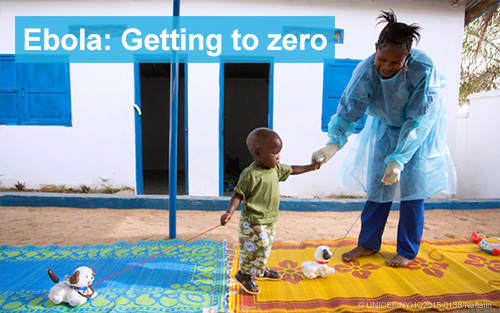By Iyemah David
The Democratic Republic of Congo’s (DRC) ongoing Ebola outbreak in Kasai Province is showing encouraging signs of progress, with international and local partners scaling up interventions.
However, gaps in funding, logistics and laboratory capacity continue to pose significant hurdles.
This was disclosed on Thursday during an on-the-record press briefing organised by the World Health Organisation (WHO) Africa on the Ebola outbreak in Kasai, Democratic Republic of Congo.
As of October 1, the country had reported 64 Ebola cases, including 53 deaths, a case fatality rate of more than 65 per cent.
Encouragingly, 12 patients have recovered, underscoring the importance of early treatment.
Speaking, the DR Congo Ministry of Health’s Ebola Incident Manager, for the Bulape response, Dr Richard Omasumbu, highlighted efforts to expand treatment and improve coordination.
He said that the bed capacity has increased from 10 to more than 40 and more than 6,500 people have been vaccinated, with over 1,150 tonnes of medical supplies delivered.
Dr Omasumbu said that an air bridge and additional transport support were enabling supplies to reach remote areas.
“This outbreak has been particularly severe for health workers, but we now see strong collaboration among the Ministry of Health, WHO, Médecins Sans Frontières, ALIMA, Africa CDC and other partners, ensuring a unified response,” he said.
For field operations, Dr Mory Keita, Ebola Incident Manager, WHO, also a response expert with experience in more than 10 Ebola outbreaks, noted that community support has been unusually strong.
Keita said that this was unlike the past epidemics, saying there has been little resistance to interventions.
“Village leaders are approaching us, asking for vaccinations. This is a window of opportunity that makes it easier to intervene quickly,” he explained.
He added that with 90 per cent of cases concentrated in three neighbouring health zones, containment is more feasible than in previous outbreaks.
“More than 47,000 vaccine doses have already been received, with ring vaccination strategies underway,” he said.
On the diagnostics front, Dr Olga-TShitege, a laboratory specialist, said that the deployment of portable technologies such as GeneXpert and MinION sequencers have transformed response time. Previously and samples had to be sent to Kinshasa for confirmation, delaying treatment.
Dr Tshitege said that now, results could be confirmed closer to the point of care.
“These tools build trust because patients see that diagnosis and treatment happen quickly.
“But challenges remain with supplies, infrastructure and training of laboratory technicians,” she cautioned.
Acting Regional Emergency, WHO, Dr Patrick Abok, explained that one of the earliest challenges was access to Bulape, the epicentre of the outbreak.
“It was taking us four days to reach Bulape. But thanks to collaboration with partners, especially the World Food Programme among others.
“We were able to deal with the access challenge through an air bridge supported by a helicopter that now shuttles responders and supplies,” he said.
He added that treatment capacity was quickly established in spite constraints. A secure space was mobilised at Bulape Health Facility to set up the initial treatment centre, though limited in size.
Dr Abok disclosed that plans were now underway to expand to new sites, adding that water and electricity shortages also hampered the response.
“WHO secured a temporary water source 2.5 kilometres away, piped into Bulape Hospital, while generators were shipped in to stabilise power for laboratories, cold chain systems and lighting,” he said.
“In spite these gains, sustaining the response was costly and fragile. Running a helicopter costs about $8,000 per hour, with three rotations a day; this is not sustainable.
“We need to support not just Bulape, but also neighbouring provinces in contact tracing and surveillance,” he warned.
He further revealed that the WHO requires 21 million dollars for the response, yet less than 20 per cent has been secured.
“The organisation has been using initial dollars from the WHO Contingency Fund for Emergencies, while continuing to engage bilateral donors.
“A new Strategic Preparedness and Response Plan (SPRP), has also been launched to mobilise global resources,” he said.
Complementing him, Dr Otim Ramadan, Emergency Preparedness and Response, WHO Regional Office for Africa, Brazzaville, said that halting the outbreak at source was essential for global health security.
“The cost of inaction is too high. We saw this during the Ebola outbreak in West Africa. We cannot afford to take our foot off the accelerator now,” Ramadan said.
On healthcare workers’ protection, he noted that many were exposed before realising they were dealing with Ebola.
“Right after that, the government with WHO and partners rushed in Personal Protective Equipment, (PPE), strengthened treatment facilities and activated a ring Infection Prevention Control (IPC), strategy in Bulape and surrounding health facilities,” he explained.
He added that ongoing training, systematic IPC assessments and provision of PPE were helping frontline workers to manage cases safely.
Funding remains a pressing concern. Only 21 per cent of the WHO’s 20 million dollars response plan has been secured, while regional preparedness requires an additional 66 million dollars.
In spite these challenges, WHO officials remain cautiously optimistic. This is still an Ebola outbreak and there is no room for complacency.
Sustained investment in health systems, preparedness and community trust is vital to end the outbreak and build resilience for the future.




